
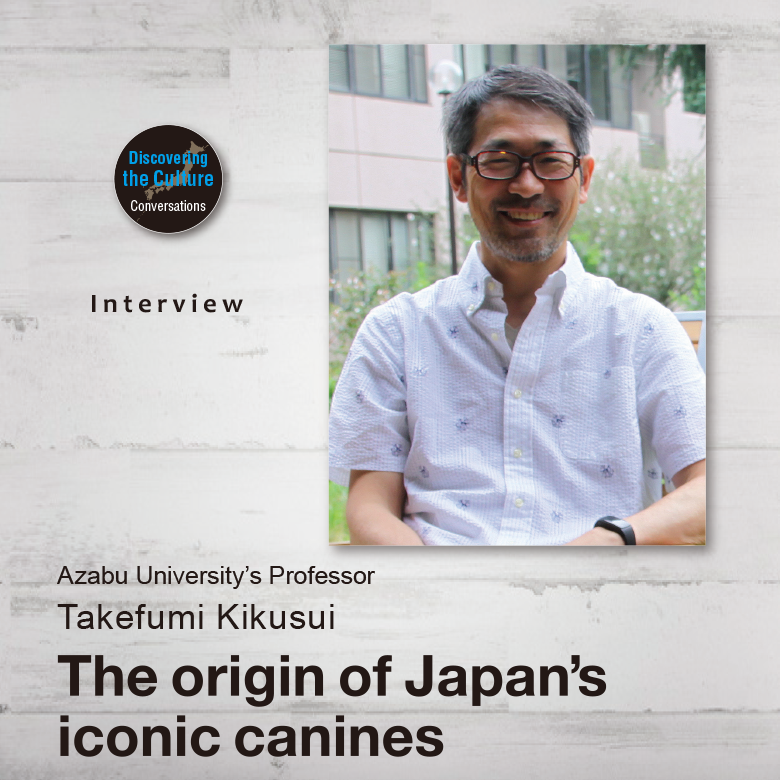
Japan is proud of its ancient regional dog breeds, six of which have been designated as natural monuments. These are the Hokkaidō-inu, the Akita-inu, the Shiba-inu (also called Shiba-ken), the Kai-ken, the Kishū-inu, and the Shikoku-inu.
Most Japanese dog breeds have erect, pointed ears, a strong, thick tail, and plain, coarse coats. Loyal and dependable, they are typically wary of strangers and devoted to a single master — precisely the dispositions that were admired in Japan’s legendary Samurai warriors. International interest in the Nihon-ken (Japanese dog) is growing, but just where did these canines come from, and how did they evolve into the dogs we see today?
To find out more about the origins and history of the Nihon-ken, we headed to Azabu University in Kanagawa Prefecture to visit animal behaviour expert Professor Takefumi Kikusui, professor of veterinary medicine and author of several books on dogs.
Text : 舟橋 愛 Ai Funahashi / English Version : Judy Evans
Keyword : Yayoi Period / Akita-inu / Kai-ken / Shiba-inu / Jōmon Period / Natural Monument / Wolves / Japanese Dog / Nihon-ken / Azabu University / Takefumi Kikusui / Jōmon Shiba
Wolves and Dogs – Different Species with a Common Ancestor
It has long been thought that dogs descended from wolves. Comparison of mitochondrial DNA sequences of dogs, coyotes, jackals and wolves shows that dogs are indeed closer to wolves than other canid species, pointing to dogs and wolves being close relatives. However, research undertaken over the past few years has shown that dogs and present-day wolves are, in fact, both sub-species that diverged from a common, now extinct, wolf ancestor.
Dogs had not actually been the subject of many scientific studies into animal behaviour or genetics until 1990, but research has really boomed since then. We now seem to be in a Golden Age of dog research, which is throwing a lot of light onto the dog-wolf connection. We know what many of the similarities are, and now there’s a focus on the differences as well, such as the marked capacity for communication with humans that is only observed in dogs.
So, if dog and wolves share a common ancestor, how and when did the dog diverge from this ancestor? How, in other words, did dogs become dogs?
Research into that question is still ongoing, but it seems likely that within this prehistoric wolf species, individual animals occurred that were not afraid to approach humans, and that humans, seeing the benefit of having a hunting partner or an animal that could stand guard at night, tolerated the presence of these “wolves that didn’t behave like wolves”. It’s thought that the tamest of these wolves would have been allowed to remain with humans, as would their pups. A kind of selective breeding.

Japanese Dog Breeds and their Genetic Similarities to the Wolf
Once the “dog” made its debut in the world, it was repeatedly cross-bred to enhance desirable traits, resulting in the huge variety of breeds we have today. Among the world’s many dog breeds, the Nihon-ken breeds, particularly the Shiba-inu and Akita-inu, are currently in the spotlight worldwide due to their genetic similarities to the wolf. It seems that Japanese dog breeds most likely retain DNA in common with their extinct wolf ancestor, which is also retained by modern-day wolves. Indeed, it’s possible that the Nihon-ken breeds’ mistrust of strangers, their feisty, courageous nature, and their intelligence and ability to think for themselves are all characteristics that remain from this wild ancestor.
It’s also worth noting that the pronounced physical characteristics (such as the pricked, triangular ears, the curled tail and the compact frame) that we see in modern-day Nihon-ken breeds, are almost identical to the physical characteristics of dogs found in archaeological sites that are thousands of years old. The fact that Japanese dogs have changed so little over thousands of years is thought to be due to Japan’s geographical isolation, as well as to the fact that selective breeding did not begin in Japan until recently. For most of the history of the Japanese dog, breeding had been left up to nature and in the absence of human interference, these original traits were not bred out.
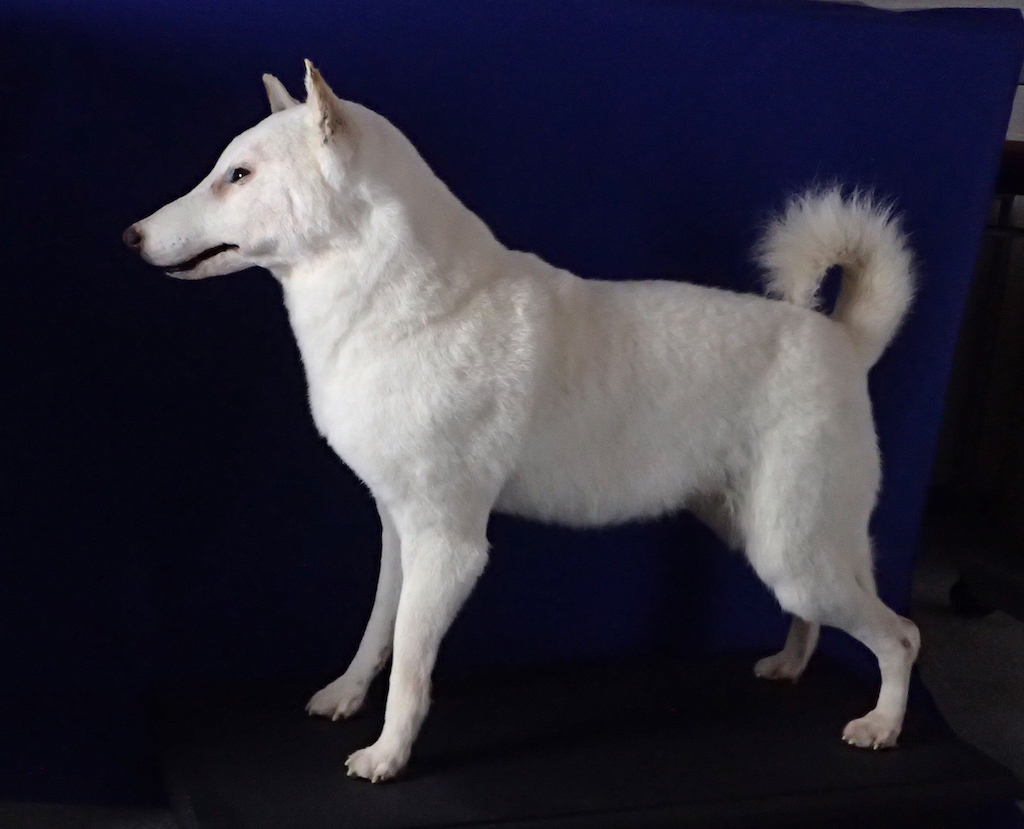
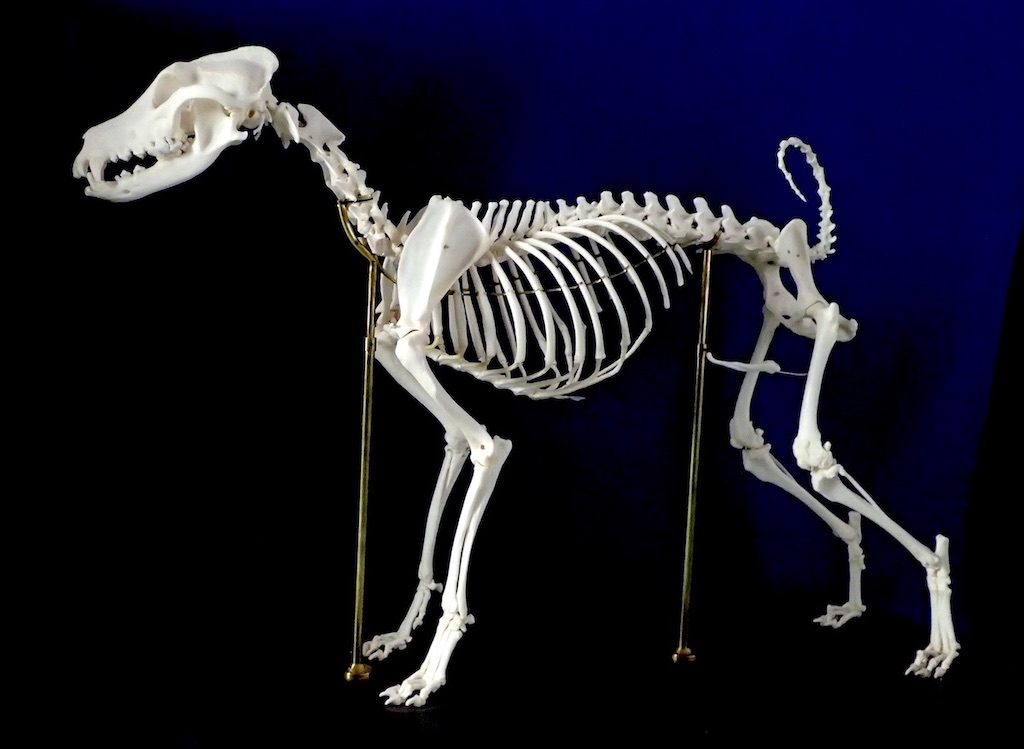
Dogs Arrive with Humans in Two Separate Waves
The oldest dog bones found in Japan came from a Kanagawa Prefecture archaeological site that dates back to the early Jōmon Period, roughly 9,500 years ago. A Jōmon site in Ehime Prefecture, dating back 7,200 to 7,300 years, yielded bones of a dog that had been given a burial. From this it’s clear that dogs and people were living together back then.
Later, in the Yayoi Period (1,000 BC – 300 AD), the Yayoi people brought the Yayoi-inu (Yayoi dog) with them from the Korean Peninsula. As the Yayoi people (and their dogs) became dominant and spread throughout the country, the Jōmon people and their dogs were pushed to the northern and southern ends of the Japanese islands. As a result, we find the remains of many Yayoi-inu in the centre of Japan, and large numbers of Jōmon-inu in Hokkaidō and Okinawa, the northern and southern extremes of the country. There was also interbreeding between the two types of dog. We can trace modern Japanese dogs back to those early Jōmon and Yayoi dogs, as well as to the dogs that resulted from interbreeding between the two.
It’s even possible that mating occurred between dogs and the Japanese wolf, an aloof creature, now extinct, that lived in the mountains and forests away from human habitation. There’s a high probability that the Japanese dog’s “wolf blood” also results from this.
A Combination of Natural Selection and Selective Breeding
It is thought that over time, depending on the land and environment in which they lived and the uses for which they were employed, changes occurred in Jōmon and Yayoi dogs until they gradually transitioned into the various forms we see today.
For instance, the Akita-inu, which was used for hunting bears, needed to be large in stature. Meanwhile the Kai-ken, which was used to hunt smaller prey such as serow, has strong legs that allow it to run easily up steep inclines. To survive and thrive in Japan’s steep, rocky, forest and mountain terrain, dogs needed to be quick-witted and agile so that they could move quickly and catch game. Researchers have theorised that these conditions may have led to dogs becoming smaller and more compact, which is why most Nihon-ken fall into the small to medium size range.
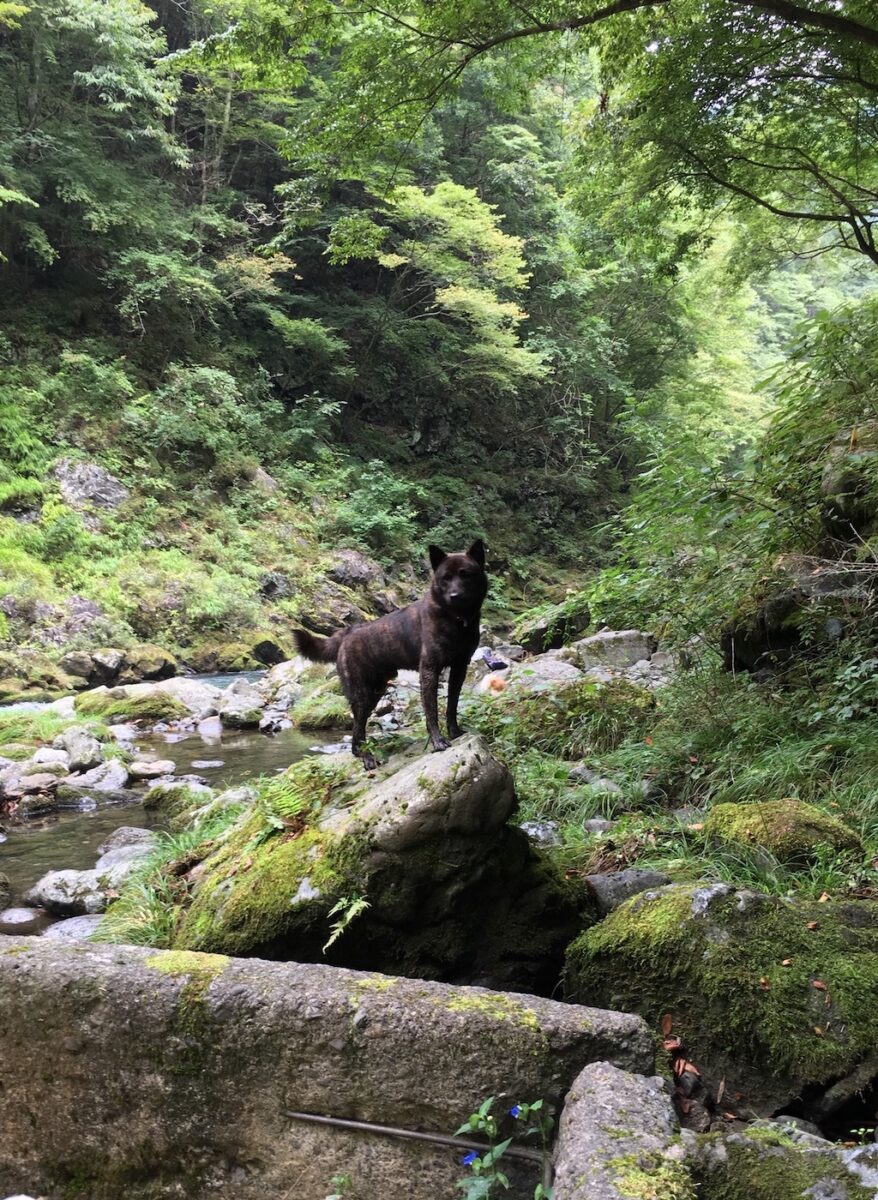
As much as we talk about humans breeding dogs for their desirable traits, the fact is that in Japan, until as recently as fifty years ago, most dogs were allowed to run free and breeding was generally left to nature. It could be argued that the strongest animals were therefore able to leave offspring and that the gene pool was maintained in a natural way that kept it very close to the original ancestor breeds. By contrast, Europe has a longer dog-breeding history of around two hundred years, with breeders strictly controlling the breeding process according to the attributes they want to enhance in an animal. Many European breeds have sociable natures and respond readily to human commands, while the Nihon-ken breeds, due to their breeding history, are rather unsociable and prefer to think for themselves rather than do as they are told.
Times are changing though, and so are the characteristics that Japanese people want to see in their dogs. With more people are now breeding Japanese dogs for their suitability as pets rather than as hunting dogs, we see Japanese dog breeds becoming smaller and more obedient. The flip side of this is that Japanese dogs are losing the original temperament and appearance of the Nihon-ken. And that’s not the only loss. Aside from the six regional breeds that have been declared natural monuments, there are other breeds of Japanese dogs without protection that are quietly disappearing.
The Japanese dog, which has until now remained fairly true to its origins, seems to be in a period of transition. Nevertheless, there are groups dedicated to preserving the original breeds. One of these is the Shiba-inu Hozonkai (Shiba Dog Preservation Society), which has spent several decades “re-creating” the Jōmon Shiba, a breed of Shiba-inu based on canine skeletal remains found in Jōmon Period archaeological sites.
Dogs migrated to this “new world” together with humans many thousands of years ago and proved themselves to be indispensable companions when it came to building a new life here in this land. Surely these ancient bloodlines are worthy of preservation.
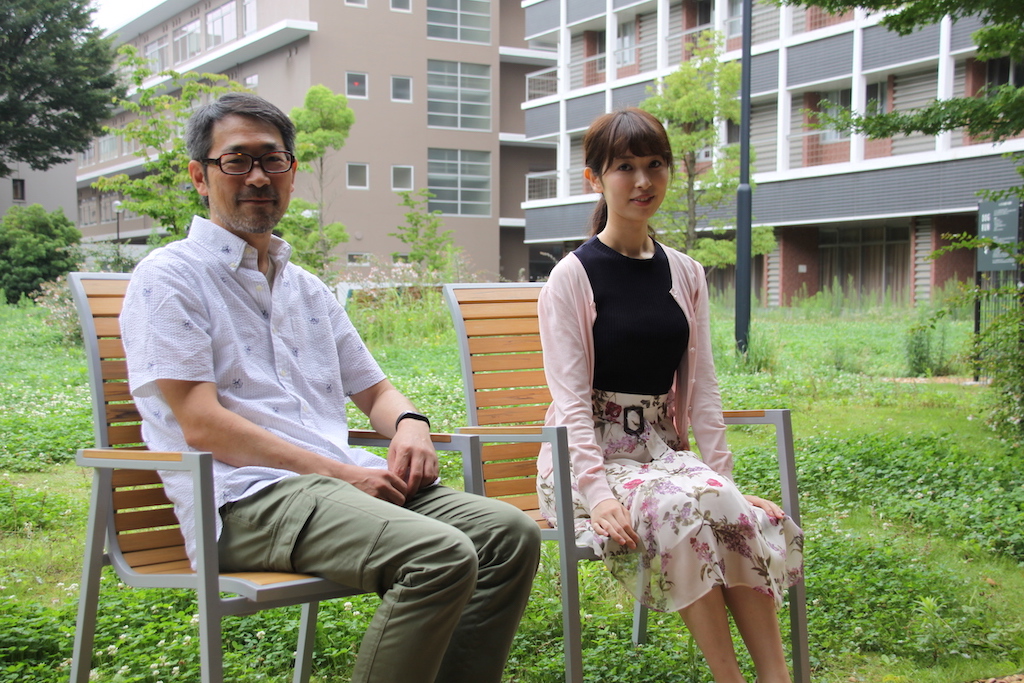
Takefumi Kikusui
Professor at Azabu University’s Laboratory of Human-Animal Interaction and Reciprocity. Born in Kagoshima Prefecture in 1970. Studied Veterinary Science at University of Tokyo. After serving as an assistant at the University of Tokyo Graduate School of Agricultural and Life Sciences (Animal Behavioral Lab), became an associate professor at Azabu University School of Veterinary Medicine Laboratory of Companion Animal Research. Specialises in the study of animal behaviour. Has authored a number of books, including “Ikimono no Sanpo Michi” (The animal world from an animal behaviourist perspective), published by Bun’eidō; “Social Brain”, University of Tokyo Press; “Inu to Neko no Kōdōgaku” (Dog and Cat Behaviour), published by Gakusosha; “Nihon no Inu – Hito to tomo ni Ikiru” (Japanese Dogs – Living with People), co-author, published by University of Tokyo Press; “Ai to Bunshi – Hikareau Futari no Kemisutorii” (A study of sexual attraction mechanisms in humans and animals), published by Tokyo Kagaku Dōjin.








